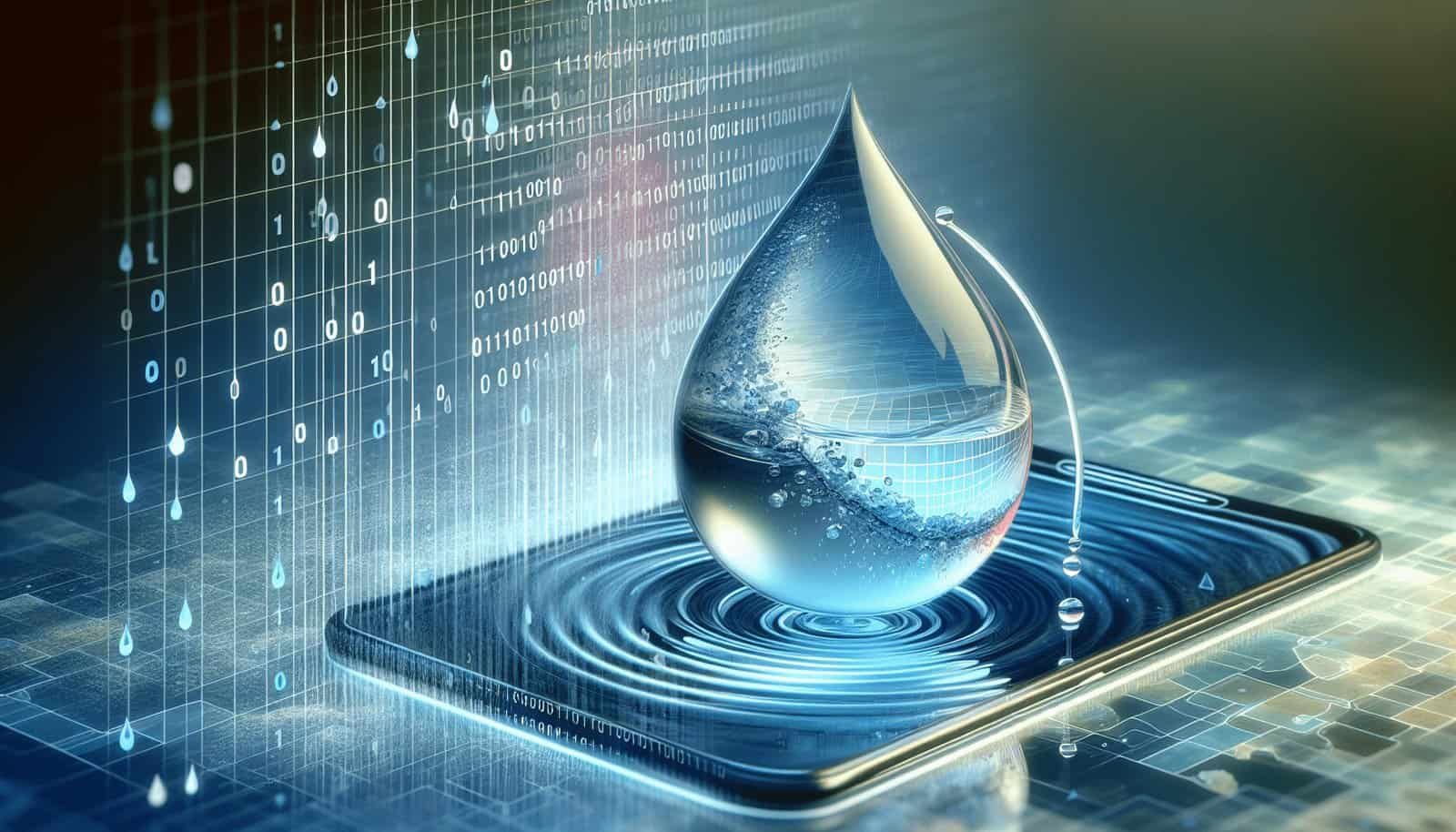Have you ever been concerned about the quality of the water from your well? Understanding the quality of your well water is crucial not only for health reasons but for ensuring that your household chores and personal care routines are not adversely affected. You might wonder if there are efficient ways to oversee the quality of your well water, perhaps conveniently through the device sitting in your pocket or on your desk.
Why Monitor Well Water Quality?
Monitoring well water quality is essential primarily because water quality can directly impact your health and well-being. Poor water quality might lead to various health issues, ranging from digestive disorders and diseases to skin irritations. It can also corrode your plumbing and reduce the lifespan of your household appliances.
By regularly monitoring your well water, you can ensure it remains safe, clean, and free of contaminants that might pose health risks. This proactive approach also allows you to respond quickly if there are changes in the water quality, potentially saving you from costly health or property damage.
Understanding Well Water Contaminants
Before diving into the various apps that can assist you, it might be helpful to understand what kinds of contaminants you should be on the lookout for in your well water.
Common Contaminants Found in Well Water
Bacteria and Viruses
- These can enter well water through various routes, including sewage, animal waste, and surface runoff. They pose significant health risks and can cause diseases such as E. coli, hepatitis, and more.
Heavy Metals
- Substances like lead, arsenic, and mercury can leach into well water from natural deposits or industrial activities. They are hazardous to health and can affect neurological function and organ systems.
Nitrate/Nitrite
- Often originating from fertilizers, septic systems, or natural processes, high levels of nitrates in drinking water can be harmful, especially to infants and pregnant women.
Pesticides and Herbicides
- These chemicals can enter water supplies through agricultural runoff, posing risks to human health and ecosystems.
Volatile Organic Compounds (VOCs)
- These pollutants, often from industrial discharge or fuel spills, can have long-term health effects, including cancer.
Understanding these contaminants helps underscore the importance of regular monitoring. Thanks to technology, monitoring your well water can be much easier than sending samples to a lab for testing.

How Apps Can Assist with Monitoring Water Quality
With the rise of smartphone technology, several applications have been developed to make water quality monitoring more accessible and efficient. These apps can provide you with a wealth of information right at your fingertips, ranging from water quality parameters to alerts about potential contaminants.
Benefits of Using Apps for Water Quality Monitoring
Convenience
- Monitor the quality of your well water anytime and from anywhere.
Data Tracking
- Some apps allow you to track historical data, helping you identify trends and changes over time.
Alerts and Notifications
- Get notified immediately when the quality of your well water falls below safe standards.
Ease of Use
- Many apps are designed with a user-friendly interface, making it easy to understand the data without needing a science degree.
Now let’s take a closer look at specific apps that could help you monitor your well water quality effectively.
Popular Apps for Monitoring Well Water Quality
Various apps are available that can help you monitor well water quality. Each app has features specifically tailored to meet the needs of different users, whether you’re interested in basic data or detailed analysis.
1. Water Testing App
Features
This app allows you to conduct a variety of tests for contaminants such as bacteria, nitrates, and heavy metals. It’s designed for general homeowners and provides step-by-step guides on how to collect samples and report results.
Pros
- Provides detailed testing methods and instructions.
- Offers a community feature where users can share and compare results.
Cons
- Some tests may require additional purchases for test kits.
2. Water Alert
Features
Water Alert provides real-time notifications of any changes or alerts related to water quality. It allows you to set custom alert parameters based on your personal safety standards.
Pros
- Customizable alerts help you stay ahead of potential problems.
- The app is continuously updated for improved user experience.
Cons
- Might require a stable internet connection for real-time updates.
3. H2O Monitor
Features
Specializing in continuous monitoring, H2O Monitor utilizes sensors to give real-time updates and logs historical data for analysis over time. It connects to various water quality sensors that can be installed in your well.
Pros
- Offers a comprehensive, ongoing monitoring solution.
- Allows for detailed data analysis over extended periods.
Cons
- Requires the purchase of compatible sensors, which can be costly.
4. SafeWater
Features
SafeWater helps in identifying potential risks by providing insights into the water quality standards applicable in your region. It also offers educational resources on water safety and contamination prevention.
Pros
- User-friendly with a wealth of educational resources.
- Focuses on providing solutions and preventative measures.
Cons
- Limited real-time monitoring capabilities without additional tools.

Comparing App Functionality
To make the decision easier for you, here’s a comparison table detailing the primary features of these apps:
| App | Real-Time Monitoring | Historical Data | Alerts & Notifications | Educational Resources |
|---|---|---|---|---|
| Water Testing App | Limited | Yes | Yes | Limited |
| Water Alert | Yes | Limited | Yes | Yes |
| H2O Monitor | Yes | Yes | Yes | Yes |
| SafeWater | Limited | No | Yes | Extensive |
As you can see, each app supports different functions that might appeal to various users based on their specific needs and resources, such as internet connectivity or budget for additional hardware.
Steps to Choose the Right App for Your Needs
When selecting an app to monitor well water quality, consider the following factors to ensure you choose the best one for your situation:
Assess Your Needs
Start by asking yourself what you need. Are you looking for real-time alerts, detailed data analysis, or simply reliable testing methods? Understanding your priority can help narrow down the options.
Evaluate Compatibility
Check if your smartphone or tablet is compatible with the app, particularly if additional hardware, like sensors, is required. Ensuring compatibility minimizes the chances of interruption in your monitoring activities.
Budget Considerations
While some apps are free, others might charge for premium features or require additional purchases like test kits or sensors. Consider how much you’re willing to invest for the security and reliability of your water source.
User Reviews and Ratings
Look into user reviews and ratings to get an idea of how effective and reliable an app might be. Sometimes, the experiences of others can provide valuable insights into potential issues or benefits of an app.

The Future of Water Quality Monitoring
With advancements in technology, water quality monitoring is becoming more efficient and accessible. Beyond apps, there are several trends and innovations worth noting that might impact well water monitoring in the future.
Integration with Smart Home Technology
As smart home technology advances, the potential to integrate water quality monitoring into your home’s ecosystem could streamline the process, providing safer and more seamless monitoring solutions.
AI and Predictive Analytics
Artificial intelligence (AI) and predictive analytics could provide more personalized recommendations and warnings about water quality changes, moving from reactive to proactive management.
Global Networked Monitoring
In time, a network of connected devices might offer a broader understanding of water quality on a regional or even global scale, using collective data for predictive analytics and large-scale risk assessments.
Conclusion
Monitoring your well water quality is an essential step towards ensuring the health and safety of you and your loved ones. With the assistance of mobile apps and emerging technology, keeping a close watch on your water’s conditions has never been easier or more effective. Take the time to assess your needs, explore the available solutions, and select the tools that best suit your requirements. Your peace of mind is well worth the effort, knowing you have reliable, safe water coming from your well.

